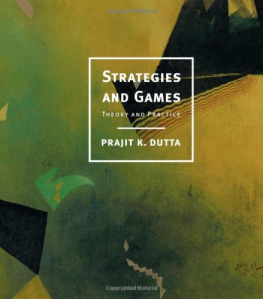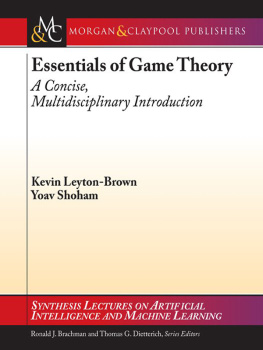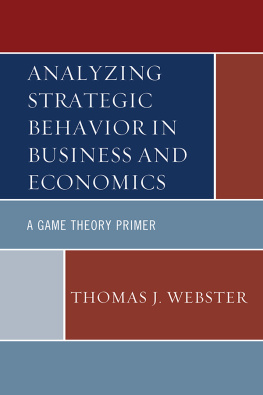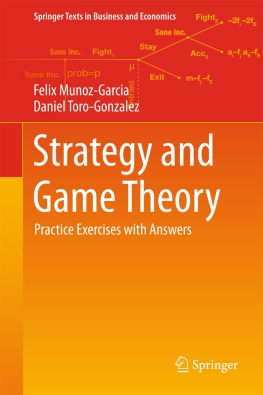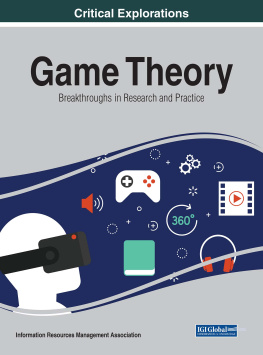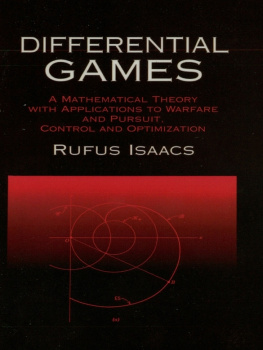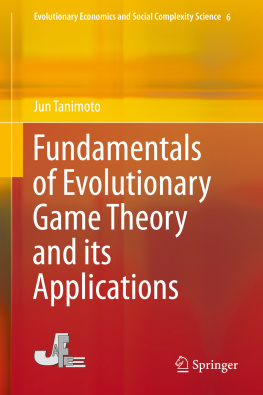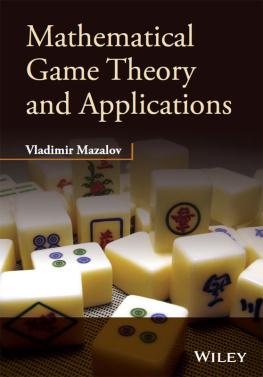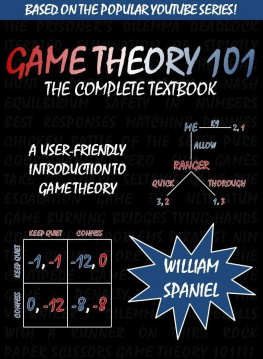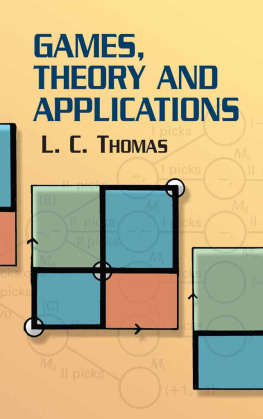Contents
List of Figures
List of Tables
Guide
Pagebreaks of the print version
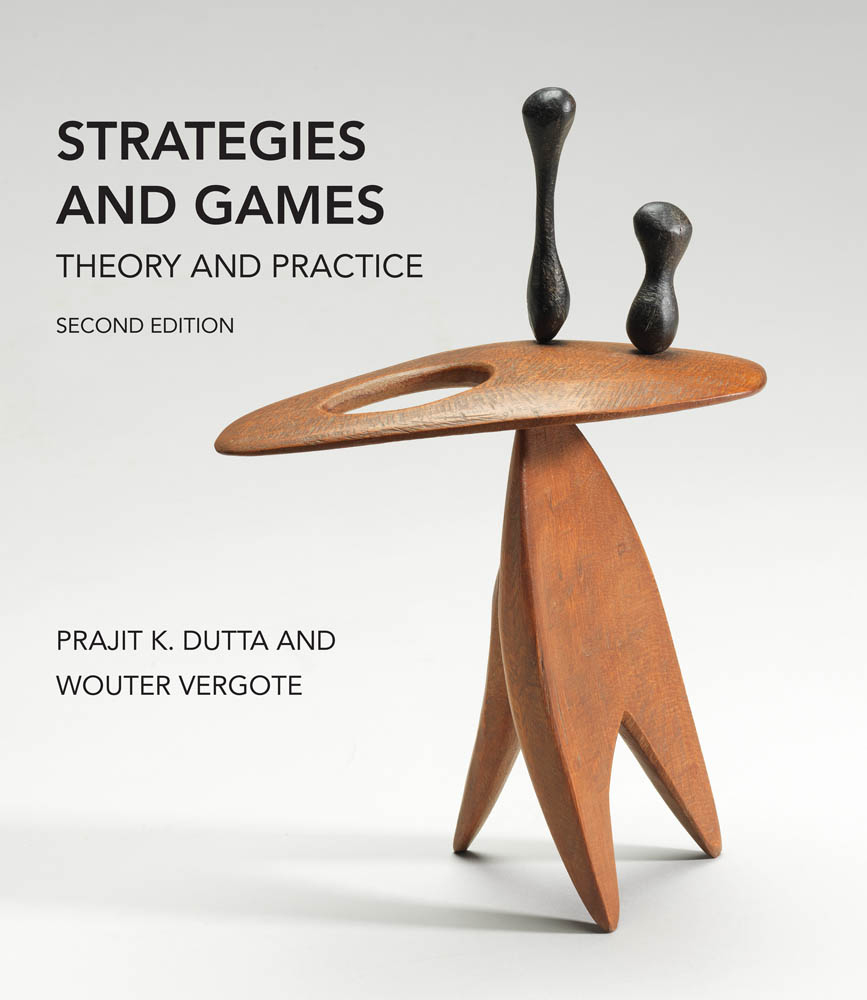
STRATEGIES AND GAMES
THEORY AND PRACTICE
SECOND EDITION
PRAJIT K. DUTTA
WOUTER VERGOTE
The MIT Press
Cambridge, MassachusettsLondon, England
2022 Massachusetts Institute of Technology
All rights reserved. No part of this book may be reproduced in any form by any electronic or mechanical means (including photocopying, recording, or information storage and retrieval) without permission in writing from the publisher.
The MIT Press would like to thank the anonymous peer reviewers who provided comments on drafts of this book. The generous work of academic experts is essential for establishing the authority and quality of our publications. We acknowledge with gratitude the contributions of these otherwise uncredited readers.
Library of Congress Cataloging-in-Publication Data.
Names: Dutta, Prajit K., author. | Vergote, Wouter, author.
Title: Strategies and games: theory and practice / Prajit K. Dutta and Wouter Vergote.
Description: Second edition. | Cambridge, Massachusetts: The MIT Press, [2022] | Includes bibliographical bibliographical references and index.
Identifiers: LCCN 2021046084 | ISBN 9780262046527 (hardcover)
Subjects: LCSH: Game theory. | Equilibrium (Economics)
Classification: LCC HB144.D88 2022 | DDC 330.01/5193dc23
LC record available at https://lccn.loc.gov/2021046084
d_r0
TO MA AND S2
Prajit
TO ANNIE, TANI, AND FLO
Wouter
BRIEF CONTENTS
CONTENTS
- List of Figures
- List of Tables
PREFACE
The first edition of this book evolved out of lecture notes for an undergraduate course in game theory that one of the authors (Dutta) first taught at Columbia University over 20 years back. Initially teaching out of available texts, and finding himself somewhat dissatisfied with the ones then available, he built himself a small bypass; he wrote a set of sketchy lecture notes from which he taught while assigning a more complete text to the students. Sadly, this compromise turned out to be even worse for the students, because at that point teacher and students were traveling on different roads. And then (foolishly) he decided to build his own highway; buoyed by a number of favorable referee reports, he decided to turn the notes into a book. It was a foolish idea because he realized only too late how much hard work is involved in building a road.
While the road so built had many shortcomings, nevertheless, it did seem to satisfy a loyal and growing audience of students and instructors. Over the years hence, there were calls for a second edition. There was clearly a good argument to fill in the blanks on topics that had been omitted the first time around especially as new and exciting discoveries were made in game theory and the breadth of its applications expanded. Furthermore, there was a clear and demonstrable need for an easily accessible solutions manual and teaching aids such as instructors slides. Thankfully, Dutta was able to convince the other author (Vergote)who had not yet realized how much hard work is involved in rebuilding a road and adding new lanesto come on board for the second edition.
And that new road is what you are starting your journey on. We hope you will find it an enjoyable ride and will appreciate the sights, both new and old.
THE BOOKS PURPOSE AND ITS INTENDED AUDIENCE
The objective of this book is to provide a rigorous yet accessible introduction to game theory and its applications, with a focus on economics, business, and politics. Since the first edition went to press, game theorys place on the academic map has witnessed two significant developments. First, as game theory has become a widely accepted methodological tool in political science, it is quite common to find game theory on the course list of political science majors, allowing students to sharpen their game-theoretical skills. Second, students and researchers from a wide spectrum of scientific disciplines are now interested in learning more about game theory (e.g., law, sociology, biology, computer science, philosophy, linguistics). To accommodate these two scholarly trends, we introduce a set of chapters on game theory applied to political science and we include, across the board, more examples, case studies, and applications from political science and other disciplines.
The material is intended principally for three audiences.
- First, an undergraduate audience that would take this course as an elective for an economics or business major.
- Second, political science or international relations students who take this course as part of their undergraduate major or their graduate curriculum (such as an MA in public or in international affairs).
- Third, MBA students in business schools that would find the many business applications and case studies attractive.
In addition, an effort is made to present the material in a way that is useful to graduate studentsPhD students in political science, business, or economics not specializing in economic theory, and so onwho would like to have a source from which they can get a self-contained, albeit basic, treatment of game theory.
Pedagogically we have had one overriding objective: to write a textbook that would take the middle road between the anecdotal and the theorem-driven treatments of the subject. On the one hand, there is the approach that teaches purely by examples and anecdotes. In our experience that leaves the students hungering for more. On the other hand, there is the more advanced approach emphasizing a rigorous treatment, but again, in our experience, when there are too few examples and applications it is difficult to keep most students interested and engaged.
We have tried to combine the best elements of both approaches. Every result is precisely stated (albeit with minimal notation), all assumptions are detailed, and at least a sketch of a proof is provided. The text also contains 13 chapter-length applications and 14 fairly detailed case studies.
DISTINCTIVE FEATURES OF THE BOOK
We believe this book improves on available undergraduate texts in the following ways.
Content
A unique feature of the second edition of this book is that its content offers a comprehensive introduction to game theory to a range of different audiences. The material is interlaced in such a way so that it caters seamlessly to political science, economics, and business students. Later, we offer several didactic paths (syllabi) that can be taken to that end.
This is one of the few texts that provides a detailed analysis of dynamic strategic interaction (in Part III). We believe that many of the interesting applications of game theory are dynamicstudent interest seems always to heighten when we get to this part of the courseand we have found that every other text pays less or sometimes just cursory attention to many dynamic issues. The theory of repeated games is studied over two and a half chapters, including discussions of finitely and infinitely repeated games as well as games with varying stage payoffs. We follow the theory with a full portfolio of chapter-length applications to economics, politics, and business: market-making on the National Association of Securities Dealers Automated Quotation (NASDAQ) financial market, the price history of the Organization of Petroleum Exporting Countries (OPEC), logrolling and pork-barrel spending, trade agreements and strategic bargaining. A discussion of dynamic games (in which the game environment evolves according to players previous choices) follows along with an application to global warming.


